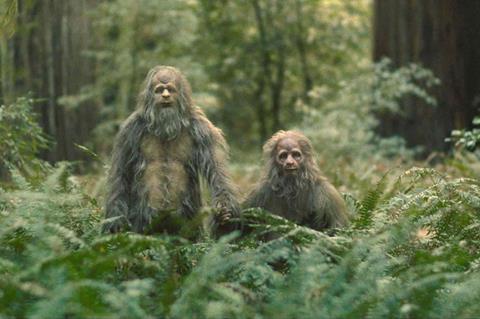US filmmakers David Zellner and Nathan Zellner have been hooked on the Bigfoot myth since childhood, culminating in Berlinale Special title Sasquatch Sunset.

Filmmaking brothers David and Nathan Zellner first became interested in Bigfoot, aka Sasquatch, when they watched TV series In Search Of… in the 1970s. One episode of the Leonard Nimoy-hosted show, which investigated everything from UFOs to the Loch Ness monster, featured footage that was shot in 1967 by Roger Patterson and Robert Gimlin. It purported to show Bigfoot — a hairy, humanoid-like creature said to inhabit the forests of North America — and the Colorado-born siblings were hooked.
“It’s one of the most famous pieces of film in film history after the Zapruder film [capturing John F Kennedy’s assassination],” says David. “[It] defined the whole modern myth of [Bigfoot].”
The Zellners, who write, direct and act, made their feature directing debut with 1997’s Plastic Utopia and have mined their own idiosyncratic seam ever since. In 2010, they crafted Sasquatch Birth Journal Two, a four-minute film about a sasquatch giving birth in a tree, which played at Sundance. “It was maybe our most successful short, as ridiculous and shoddy as [the suit] was,” says David. They also made Sasquatch Birth Journal One, a 20-minute, single-shot installation, which was less successful. “I don’t know even know if I’ve watched the whole thing,” admits David. “It’s a test of patience.”
Not long after, the brothers found themselves with several months free when another project fell apart, and David, as a form of catharsis, sat down to write a sasquatch feature. “It was one of the most fun things I’ve written because it was unconventional,” he says. “There’s no dialogue, obviously. The most important thing was conveying the tone — the mix of humour and pathos we wanted to hit.”
Sasquatch Sunset, which premiered at Sundance and is showing in Berlinale Special, follows four sasquatches — two males (played by Nathan and Jesse Eisenberg), one female (Riley Keough) and a child (Christophe Zajac-Denek) — over the course of a year as they forage, fight, grunt and copulate in the giant Redwoods of northern California.
Initially, the Zellners had difficulty setting it up, even after partnering with Lars Knudsen and Ari Aster’s Square Peg, and decided to reach out to Eisenberg, who they had known for 15 years.
“We didn’t want stunt performers, we wanted as much as possible to convey a nuanced performance through the prosthetics, and through the creatures,” says David. Within a few hours, Eisenberg had read the script and signed on. “You either get it or you don’t. Thankfully, it didn’t take a lot of convincing for him or Riley.”
“It sounds like a hard sell, but David wrote a great script and when they both read it, they had an instantaneous reaction of, ‘This is unique,’” adds Nathan. “Also, [there is] the challenge of acting through makeup and without dialogue, and using tools you don’t normally use.”
Eisenberg even put his hand into his own pocket to help fund the movie after their initial financier pulled out. “If Jesse hadn’t done that, the movie wouldn’t have gotten made,” says David. “He completely saved the day.”
The rest of the backing was cobbled together “piece by piece” by George Rush, a producer specialising in indie films. “We have a lot of EPs,” says David with a smile. Bleecker Street took US distribution rights before production and will release in April; Protagonist Pictures handles international sales.
On the same page
In addition to financial support, Eisenberg also brought the movement coach he had worked with on 2020’s Resistance, in which he played French mime artist Marcel Marceau. “We wanted to make sure all four of us were acting as the same species, and had a similar walk or postures,” says Nathan, who would direct alongside his brother while wearing full sasquatch makeup.
Prior to filming, the cast took part in an ‘Ape Camp’. “We were improvising, testing out edible plants,” says Nathan. “We watched a lot of primate videos and got inspiration from those and other Bigfoot lore, and came up with the whoopings and the ways they would communicate.”
Production shot for 25 days in autumn 2022 in northern California, with the cast wearing custom-made sasquatch suits. The full-face prosthetics took two hours to apply each morning, but still allowed them to emote.
“That was crucial,” says David. “We wanted the actors’ real eyes to be seen because so much information was going to be communicated through them. Especially with Riley, because she’s so expressive. She has these bright blue eyes that pop and telegraph so much info.”

























No comments yet